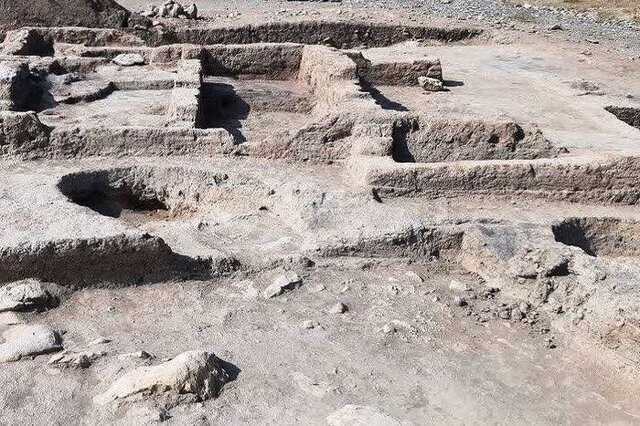Salvage dig unearthes rare Sassanid graves in northwest Iran

TEHRAN – A salvage dig in northwest Iran has unearthed arrays of rare funerary tomb chambers estimated to date from the Sassanid era.
The discovery marks rare Sassanid burial [ruins] being discovered in West Azarbaijan, the provincial tourism chief said on Saturday.
The tomb chambers were found during a salvage work conducted on one of the 11th satellite sites in Oshnavieh county before they were submerged by the impact of a developing dam nearby.
Experts say Sassanid architecture is characterized by a special use of stone rubble and plaster mortar, which makes it different from the early Islamic architecture found in the area.
Moreover, pottery fragments as well as objects made of stone and bone were found during the dig, the official noted.
Earlier this year, the site yielded relics estimated to date some 7,000 years, belonging to the Dalma culture.
Surrounded by towering mountains, Oshnavieh is called an archaeologist’s paradise. It lies on a thick layer cake of civilizations that emerged and disappeared over millennia. It is home to archaeological sites and hills, tomb chambers, and bas-relief carvings belonging to the Kingdom of Urartu (860 BC– 590 BC). Moreover, it boasts some 100 sites registered on the national cultural heritage list.
It was once a prosperous settlement for the Urartu kingdom, whose entombed relics still draw the attention of archaeologists and even illegal excavators to the region. Over the past couple of years, Oshnavieh and its surrounding areas have witnessed a series of unauthorized, unprecedented drillings and excavations committed by unauthorized diggers and smugglers.
Sassanid Empire, at its greatest territorial extent, encompassed all of present-day Iran and Iraq and stretched from the Levant to the Indian subcontinent and from South Arabia to the Caucasus and Central Asia.
In 2018, UNESCO added an ensemble of Sassanian historical cities in southern Iran — titled “Sassanid Archaeological Landscape of Fars Region”-- to its World Heritage list. The ensemble comprises eight archaeological sites situated in three geographical parts of Firuzabad, Bishapur, and Sarvestan. It reflects the optimized utilization of natural topography and bears witness to the influence of Achaemenid and Parthian cultural traditions and Roman art, which later had a significant impact on the architecture and artistic styles of the Islamic era.
AFM
Leave a Comment